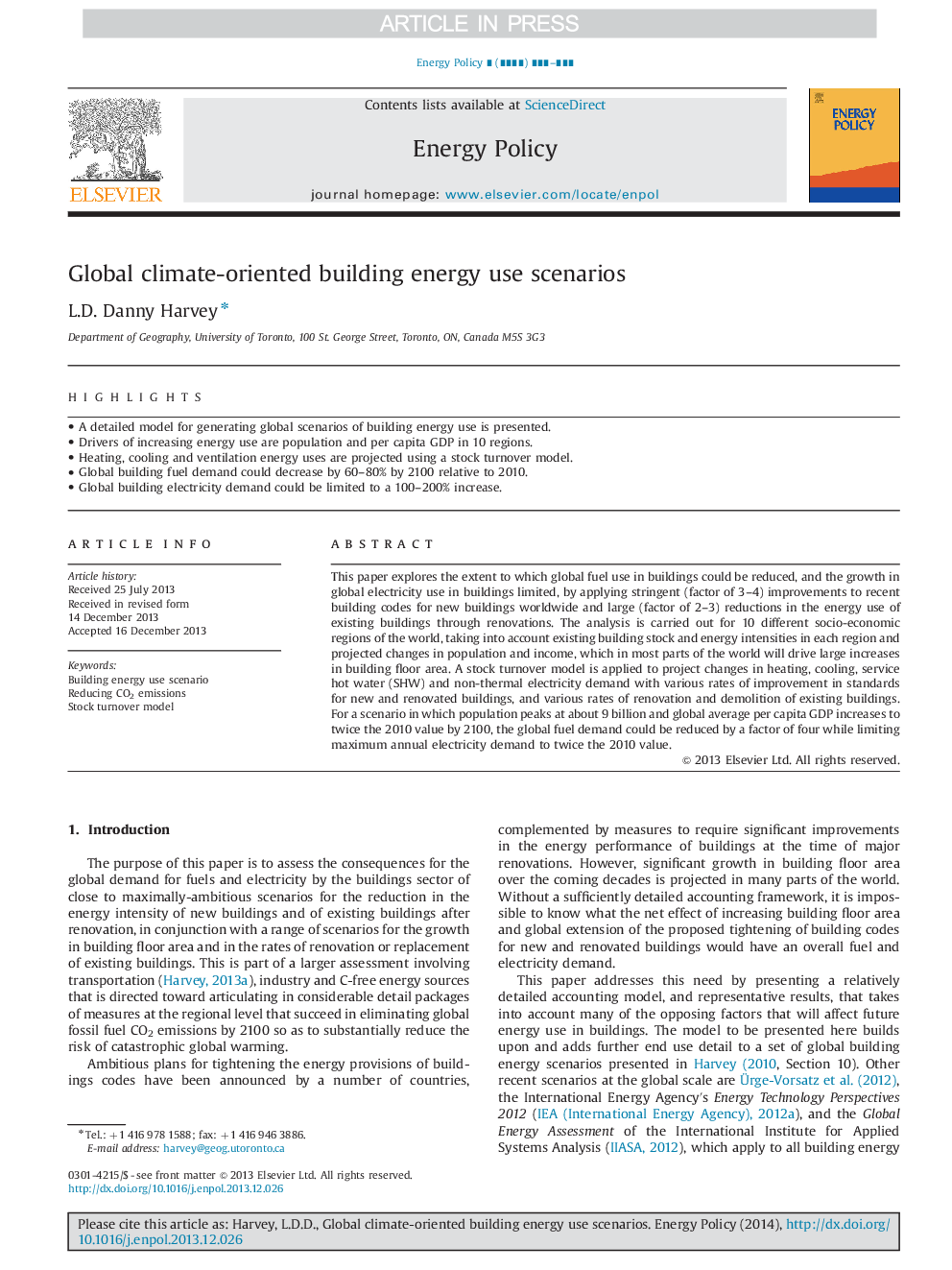| Article ID | Journal | Published Year | Pages | File Type |
|---|---|---|---|---|
| 7402511 | Energy Policy | 2014 | 15 Pages |
Abstract
This paper explores the extent to which global fuel use in buildings could be reduced, and the growth in global electricity use in buildings limited, by applying stringent (factor of 3-4) improvements to recent building codes for new buildings worldwide and large (factor of 2-3) reductions in the energy use of existing buildings through renovations. The analysis is carried out for 10 different socio-economic regions of the world, taking into account existing building stock and energy intensities in each region and projected changes in population and income, which in most parts of the world will drive large increases in building floor area. A stock turnover model is applied to project changes in heating, cooling, service hot water (SHW) and non-thermal electricity demand with various rates of improvement in standards for new and renovated buildings, and various rates of renovation and demolition of existing buildings. For a scenario in which population peaks at about 9 billion and global average per capita GDP increases to twice the 2010 value by 2100, the global fuel demand could be reduced by a factor of four while limiting maximum annual electricity demand to twice the 2010 value.
Related Topics
Physical Sciences and Engineering
Energy
Energy Engineering and Power Technology
Authors
L.D. Danny Harvey,
